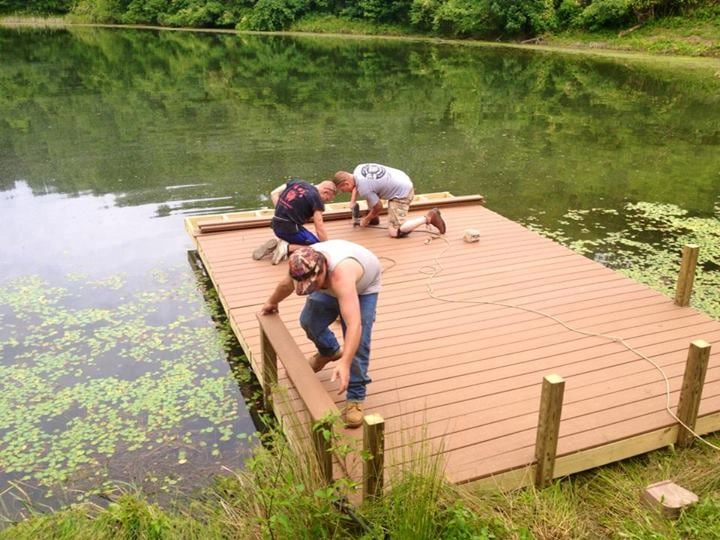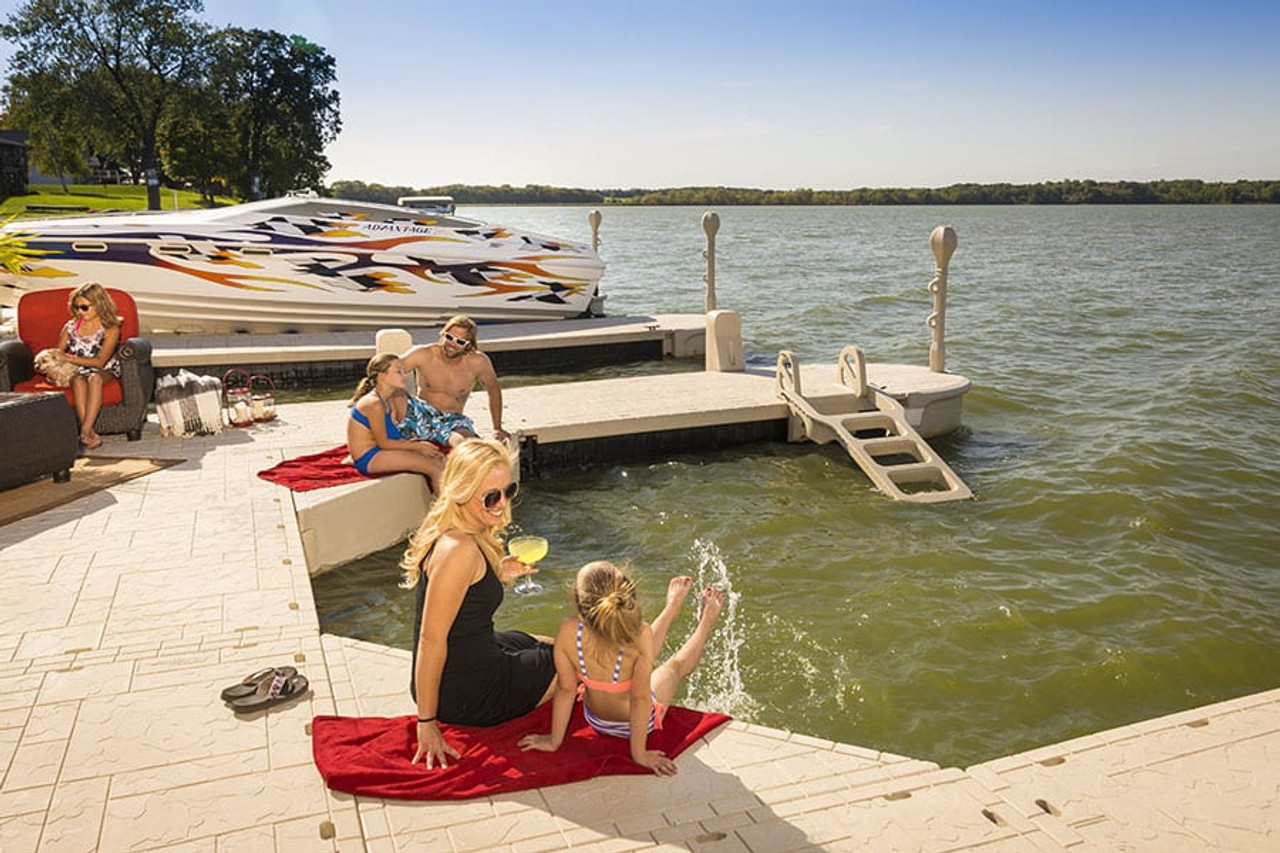Crafting Custom Solutions: Why a Floating Dock Builder is Essential for Special Requirements
Crafting Custom Solutions: Why a Floating Dock Builder is Essential for Special Requirements
Blog Article
Develop the Perfect Docking Service With Floating Docks
Floating docks existing a flexible service for a variety of maritime demands, adjusting flawlessly to varying water levels and diverse vessel types. As we discover the important aspects that add to the efficiency of floating docks, a number of vital variables pertaining to stability and maintenance will certainly arise, elevating inquiries concerning exactly how to maximize your docking experience.

Benefits of Floating Docks
Floating docks offer numerous benefits that make them a suitable selection for different maritime applications. Among the main advantages is their versatility to changing water degrees. Unlike taken care of docks, floating docks surge and loss with the tide, ensuring regular access for vessels. This attribute is particularly vital in areas vulnerable to substantial tidal variations or seasonal water level modifications.
Furthermore, floating docks are normally much easier and quicker to install compared to standard set structures. Their modular layout permits for straightforward setting up and disassembly, assisting in upkeep and moving when essential. This flexibility is specifically beneficial for temporary applications or in settings where problems may transform.
Floating docks additionally have a tendency to be extra eco friendly, as they minimize disruption to the seabed and surrounding marine ecosystems. Their buoyant nature decreases the threat of damages to aquatic life, advertising a healthier environment. In addition, these docks can be personalized to accommodate different vessel sizes, ensuring that they satisfy particular operational requirements - floating dock company.
Ultimately, the combination of flexibility, convenience of installation, and ecological considerations makes floating docks a highly reliable service for a broad array of maritime demands.
Choosing the Right Products
Picking the appropriate products for floating docks is important to make certain stability, resilience, and longevity. The selection of products straight affects the dock's efficiency in numerous environmental problems, including direct exposure to water, sunshine, and possible wear from aquatic traffic.
Common products used for floating docks consist of aluminum, timber, and high-density polyethylene (HDPE) Aluminum is light-weight, corrosion-resistant, and calls for marginal upkeep, making it an excellent selection for durability. Nevertheless, its preliminary expense can be higher contrasted to other materials.
Wood, while visually appealing and providing a standard look, can be vulnerable to rot and insect damage if not appropriately treated. Making use of pressure-treated timber or naturally resilient types like cedar or redwood can mitigate these concerns.
HDPE is a prominent choice as a result of its resistance to UV rays and chemicals, along with being eco-friendly. floating dock builder. It is lightweight and available in various colors, enabling for modification
Eventually, the best material selection will certainly depend upon details needs, including spending plan, preferred visual appeals, and ecological considerations. Mindful analysis of these aspects will certainly bring about a successful and durable floating dock option.
Layout Considerations for Security
When creating floating docks, making sure security is a basic element that can dramatically affect their functionality and security. Stability in floating dock layout is affected by various elements, consisting of buoyancy, weight circulation, and the setup of components. An optimum buoyancy system should make use of materials that give enough lift while decreasing weight. This equilibrium makes sure that the dock stays above water, even under differing lots.
Weight circulation is critical; equally dispersing tons throughout the dock avoids turning and enhances stability. This can be achieved through critical positioning of docking tools, such as cleats and fenders, in addition to appropriate spacing of drifts. Furthermore, the dimensions of the dock ought to be attentively planned. Bigger styles can offer raised stability, particularly in harsh water problems, while longer docks may call for added supports to avoid drooping.
An additional essential consideration is the ecological influence, consisting of wave activity and wind. Including attributes such as sidewalls or skirting can assist minimize the results of ecological pressures, keeping stability in damaging conditions. Eventually, a mix of thoughtful design, product choice, and understanding of ecological elements will yield a drifting dock that satisfies both stability and safety demands.
Setup Tips and Strategies

Next, secure the essential authorizations and follow neighborhood regulations, which might determine installment techniques and ecological factors to consider. If needed, involve a certified service provider experienced in floating dock installations. Usage high-quality materials developed for aquatic settings to improve toughness and long life.
When placing the dock, align it parallel to the shoreline to promote very easy access. Ensure that the anchoring system is durable, employing cinder block or helical supports to support the dock against wind and wave action. It's vital to make up seasonal water level changes, including prospective ice movement in colder climates.
Throughout the setup, double-check the dock's floatation and security prior to settling the anchoring. On a regular basis evaluate the installation for any indicators of wear or damages. By adhering to these suggestions and methods, you can accomplish a safe and secure, useful, and visually pleasing floating dock installment that fulfills your needs.
Maintenance and Care Guidelines
Caring and preserving for floating docks is important to extending their life-span and making sure risk-free usage. Normal examinations need to be conducted to recognize any type of indicators of wear, damage, or marine growth. Look for fractures, loosened installations, or tarnished areas on the dock's surface, as these issues can endanger structural stability.
Cleansing is important. Use a pressure washer to remove algae, barnacles, and debris, which can accumulate with time. For stubborn growth, take into consideration eco-friendly cleansing representatives that won't hurt aquatic navigate to this site life.
Additionally, examine the mooring lines and supports often to guarantee they are protected and complimentary from deterioration. Replace any torn or damaged lines quickly to keep security.
During extreme weather, such as storms or freezing problems, take preventive actions. Protect the dock with additional mooring lines and, if feasible, get rid of any kind of removable elements to avoid damage.
Conclusion
In final thought, the application of floating docks presents a flexible and effective docking remedy appropriate for various maritime applications. With proper setup and regular maintenance, floating docks can supply effective and reputable docking experiences for a vast range of vessels.
As we explore the essential components that contribute to the performance of floating docks, a number of vital variables pertaining to stability and maintenance will emerge, increasing concerns concerning how to optimize your docking experience. Unlike taken care of docks, floating docks increase and fall with the tide, making certain constant ease of access for vessels.When designing floating docks, making certain security is an essential aspect that can significantly impact their capability and security. Security in floating dock design is influenced by various aspects, consisting of buoyancy, weight distribution, and the plan of components. Eventually, a combination of thoughtful layout, material option, and understanding of environmental factors will generate visit this site a floating dock that satisfies both stability and safety requirements.
Report this page